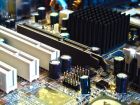Computer Hard Disk.
What is a computer hard drive? Why do I need it?
The computer hard disk, also known as a hard disk or disk storage, is the primary storage device for a computer. All those mp3's and videos you download is saved on the hard disk.
The Basics
IBM introduced the hard disk in 1965. The hard disk in a computer is used to store data. It contains disk platters that spins around on a spindle. Read and write heads are positioned over the platters and data is magnetically written to or read by the heads.
Computer Hard Disk opened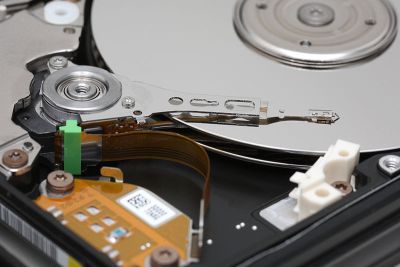
You connect the hard disk to a computer using cables, either internally or externally. There are different standards to connect disks to computers, but the SATA (Serial Advanced Technology Attachment) is the most widely used today in PC's.
Just remember that all hard disks write data to the platters in the same way, it's just how the data is transferred that is different. That's why there is different standards like SATA, SAS (Serial Attached SCSI), SCSI (Small Computer System Interface), FC (Fiber Channel) etc.
Before SATA disks, a technology called PATA (Parallel Advanced Technology Attachment) also known as IDE (Integrated Drive Electronics), were used.
The main difference between the two technologies is the way in which the data is transferred. PATA or IDE uses a parallel bus where the bits are transferred in parallel.
SATA uses a serial bus where the bits is transferred one bit at a time.
Computer hard disks differ in physical size but the two most common sizes are the 2.5 inch and 3.5 inch sizes. This refers to the thickness of the disks.
Hard disks also contain cache on the disk controllers to speed up write access. The cache is like RAM that the CPU uses.
Types of hard disks
There are lots of different types of computer hard disks. I have listed a few below.
SATA - In PC's and laptops you will probably find SATA disks. They are inexpensive and easy to connect to a PC. SATA replaced the old PATA or IDE technologies. Data is transferred in serial, meaning one bit at a time as opposed to parallel which was the standard for some time.
Using serial has some advantages over parallel. The cables that connect SATA disks are much smaller and easier to make and the disks can be hot plugged. This means that a device can be removed from a system while it is powered on.
Generally, you can only connect one computer hard disk per SATA channel, but port multipliers can be used to extend this to 15.
With IDE, you could connect up to 2 disks per channel or cable. You had to set the disks up as a master and slave with a jumper on the disk. With SATA this is not needed.
SATA Cable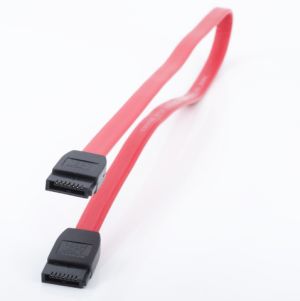 IDE or PATA cable
IDE or PATA cable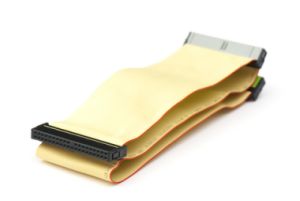
The above picture show the difference in cables between IDE or PATA and SATA. If you look at the picture, the SATA cable is much thinner than the PATA or IDE.
The transfer speeds of SATA includes 1.5 Gbit/s(150MB/second), 3 Gbit/s (300MB/second) and 6 Gbit/s (600MB/second). The 300MB/s standard is widely used today is PC's.
SAS - Serial Attached SCSI or SAS disks replaced the SCSI or Small Computer System Interface. As with SATA, SAS uses a serial protocol to transfer data to the disk, where SCSI used parallel.
The problem with SCSI was that the cables were big and difficult to produce and you could only connect 16 devices to a SCSI channel.
With SAS, the cables are simpler and thinner and you can connect up to 255 using port expanders. It also allows for hot plugging of devices.
The cool thing about SAS is that each device has a SAS address that is automatically assigned to the device. So when you plug the device into the channel you don't need to setup any targets or id's.
With SCSI you had to set up the id's with a jumper on the disk or enclosure and the id's had to be unique. It sometimes caused some serious headaches for engineers setting up lots of SCSI attached disks.
FC or Fiber Channel - Fiber channel also uses the serial protocol to transfer data, but it's claim to fame is the fact that the data travels through a cable as light.
Keep in mind that FC is also just a standard, so you can basically use it over copper as well. If you do, then the distance between devices is greatly reduced.
Because it uses light you can use cables up to a distance of 500 meters using multi mode fiber and up to 10km using single mode fiber.
Fiber optic cable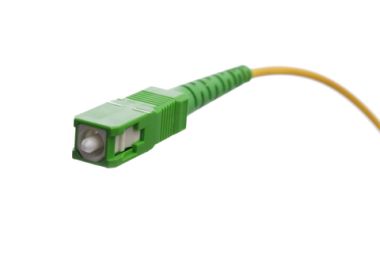
It's also extremely fast and you can get transfer rates of up to 800mb/second with faster rates being in the pipeline.
The disks are also dual ported. This means that data can be written to, and read from, at the same time.
Using switches you can connect millions of devices together but this comes at a price. Fiber channel kit is very expensive and you need specialized people to install a SAN.
For this reason FC is mostly used in server environments with big companies. It's not really used in the home computer.
Solid State Drives or SSD's - Solid State Drives does not contain any moving parts. There's no disk platters or read and write heads.
It's very similar to a memory stick or compact flash card you use in your digital camera.
Because it does not contain any moving parts it consumes less electricity and is very fast. There's no read and write heads, so getting to the data is fast.
Computer Hard Disk and Solid State Disk disassembled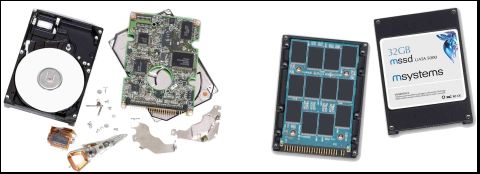
As you can see from the above picture, the Solid State Disk (picture on the right) only has memory chips so it does not need any moving parts.
The picture on the left is a disassembled computer hard disk drive. Just look at all those parts.
SSD's are still very expensive, but their prices are coming down. This is definitely the future and some PC's are even shipping with a SSD as a standard option.
The problem is still speed. The SSD's provide excellent read and write performance and they saturate the actual data bus very quickly.
If your controller is only capable of handling 300mb, then it does not matter how many SSD's you plug in on the controller. It will only handle 300MB/s.
How do I connect a hard disk?
There are different ways to connect a computer hard disk to your computer. It all depends on what type of disks you buy.
SATA disks are normally connect via cables to a connector on the motherboard. This method is referred to as internally connected.
You can also buy an external casing and connect your SATA disk via USB (Universal Serial Bus) to your PC. This kind of connection is very popular with laptops. The disk is used as a portable disk which can be disconnected and connected to another system
Just check you motherboard specs and make sure you have SATA connectors before you go and buy a SATA disk, but most motherboards support SATA.
For SAS and FC you will need to buy a extra add in adapter although some motherboards do come with on board SAS controllers. These motherboards are expensive and mostly used in server environments.
Return from Computer Hard Disk to Computer Components
Back to What is My Computer

